Step 1: Choose the correct connectors for the fiber patch cords. Both endings can come with different types of connectors. There are many connector types available.
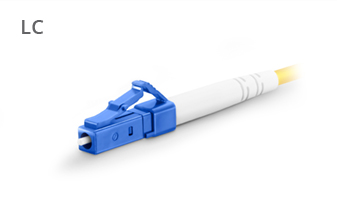
LC is mainly used for matching SFP/SFP+/XFP transceivers. Higher-density connections.

SC is mainly used for EPON, GPON, GBIC, X2, and XENPAK transceivers, telecom, and datacom.

LSH(E2000) is mainly used for telecommunication networks, fiber CATV, FTTH, etc.
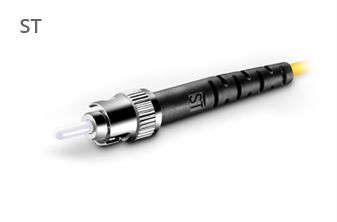
ST is mainly used for Military, campuses, FTTH, datacom, and corporate networks.
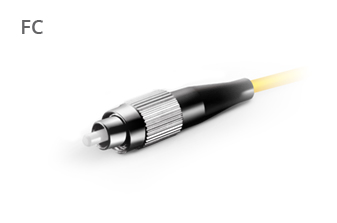
FC is mainly used for Telecom, datacom, single-mode lasers, and measurement equipment.

Mainly used for data centers, enterprise networks, and 2x fiber cabling density over SC connectors.
Step 2: Choose the polish type of connectors. There are two types of connector polish, UPC and APC.
Two Polish Types for Various Signal Sensitivity Demands.
Please Note. UPC and APC connectors couldn’t be mated together – they are not compatible with each other.

No angles, with high return loss than APC polishment, are mainly used for used for TV, telephony, and data systems.
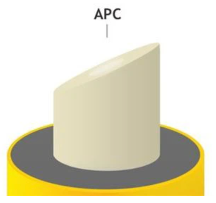
No angles, with high return loss than APC polishment, are mainly used for used for TV, telephony, and data systems.
Step 3: According to the number of fiber strands, Optic fiber patch cords can have two types of strands: simplex or duplex.
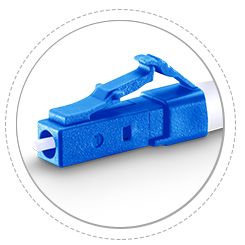
A simplex cable has one single strand of fiber with one simplex connector on each end. One end is a transmitter, the other end is the receiver, and these are not reversible. This is commonly used for Bidirectional (BIDI) fiber optic transceivers. Simplex cables are less expensive and can transmit at higher speeds.

A duplex cable has two strands of fibers with a duplex fiber optic connector, One strand transmits one way, and the other strand transmits back the opposite way. This is a huge advantage over simplex because it can transmit simultaneous bidirectional data. This is a huge advantage over Simplex because it can transmit simultaneous bidirectional data.
Step 4: Choose which fiber mode you will need, Single mode or Multi mode?
Single-mode fiber(Yellow)
Single-mode fiber optic patch cable is for long-distance data transmission because a single-mode fiber optic cable is significantly faster than a multimode. Single-mode only carries one beam of light at a time, which allows the laser to operate at 1310-1550 nm wavelength.

Multi-mode fiber
Multimode fiber optics for shorter distances applications, like within a building or an A/V application within the local network. The maximum length for a fiber optic cable is about 400 to 550 meters. But multimode cables can carry multiple light sources, making them very efficient for short distances.
Identified by ISO 11801 standard, multimode fiber optic cables can be classified into OM1 fiber, OM2 fiber, OM3 fiber, OM4 fiber and newly released OM5 fiber.
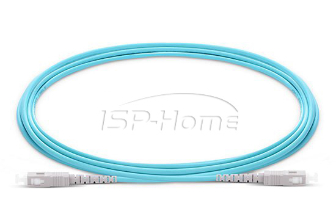
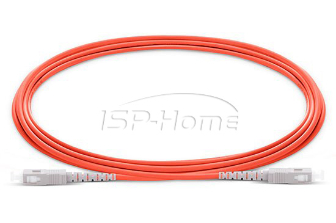

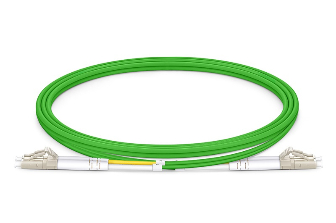
What the differences between OM1, OM2, OM3, OM4, OM5?
| MMF Cable Type | Diameter | Jacket Color | Optical Source | Bandwidteh | Fast Ethernet | 1Gb | 10GbE | 40GbE | 100GbE |
| OM1 | 62.5/125µm | Orange | LED | 200MHz*km | 2000m | 275m | 33m | / | / |
| OM2 | 50/125µm | Orange | LED | 500MHz*km | 2000m | 550m | 82m | / | / |
| OM3 | 50/125µm | Aqua | VSCEL | 2000MHz*km | 2000m | / | 300m | 100m | 70m |
| OM4 | 50/125µm | Aqua | VSCEL | 4700MHz*km | 2000m | / | 550m | 150m | 150m |
| OM5 | 50/125µm | Lime Green | VSCEL | 28000MHz*km | / | / | 550m | 150m | 150m |
Step 5: Choose the jacket material. A standard fiber patch cord can come in different material jacket.

Step 6: According to your needs, decide the cable length you’ll use. You need to know the distance between your devices and then decide the cable length you’ll use. The most common lengths are 0.5/1/2/3/5/10/15/30/50/100m, the cable length also can be customized.
ISP-Home.com provides full series telecom level fiber patch cords, if you have any demands of them, please do feel free contact us.
